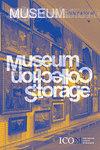引言和社论
IF 0.4
4区 艺术学
0 ART
引用次数: 1
摘要
博物馆国际简介女同性恋、男同性恋、双性恋、跨性别者、酷儿和双性人个人和团体为表达他们的差异、要求社会正义和在历史上重新占有一席之地而进行的斗争1并不是什么新鲜事。20世纪60年代,LGBTQI+活动人士反对警察在公共场所镇压的最早示威活动集中在对知名度、平等权利和社会代表性的要求上。在1969年6月具有里程碑意义的石墙骚乱50多年后的今天,我们可以说,世界各地的一些团体和有组织的运动将文化策略和基于记忆的项目作为他们在公共领域要求平等权利和包容性的重要工具(见Sandell 2017)。自20世纪80年代中期以来,LGBTQI+少数群体的这些平权策略大幅增加,这场运动的部分原因是艾滋病毒/艾滋病疫情在全球蔓延。这一历史事件的悲剧后果之一是,成千上万的男同性恋以及其他边缘化群体,如吸毒者、性工作者、跨性别者、移民等,由于政府的忽视而死亡,这遭到了全球各地的ACT UP运动的谴责2。从这些可怕的事件中,LGBTQI+人群产生了一种文化失落感,但同时也增强了一种集体意识,即恢复这种文化并打破病毒传播链是当务之急。1985年,正是在这种背景下,GLBT历史学会(旧金山)和施武尔斯博物馆(柏林)都在本期中展出。本文章由计算机程序翻译,如有差异,请以英文原文为准。
Introduction and Editorial
MUSEUM international Introduction T he struggles of lesbian, gay, bisexual, transgender, queer and intersex individuals and groups to express their differences, demand social justice and reclaim a place in history1 are not new ones. In the 1960s, the earliest demonstrations from LGBTQI+ activists against police repression in the public space were centred around demands for visibility, equal rights and social representation. Today, more than 50 years after the landmark Stonewall riots in June 1969, we can say that several groups and organised movements around the world use cultural tactics and memory-based projects as important tools in their demands for equal rights and inclusiveness in the public sphere (see Sandell 2017). These affirmative strategies of LGBTQI+ minorities have substantially increased since the mid-1980s, in a movement that was spurred in part by the global spread of the HIV/ AIDS epidemic. Among the tragic consequences of this historical event was the death of thousands of gay men, as well as other marginalised groups, such as drug users, sex workers, trans people, migrants, etc.—due to governmental neglect as denounced by the ACT UP movements around the globe2. From these terrible events emerged a sense of cultural loss among LGBTQI+ people, but also the rise of a collective awareness that restoring this culture as well as breaking the chain of viral transmission was imperative. It was in this context, in 1985, that the GLBT Historical Society (San Francisco) and the Schwules Museum (Berlin) both presented in this issue, were created.
求助全文
通过发布文献求助,成功后即可免费获取论文全文。
去求助
来源期刊

MUSEUM INTERNATIONAL
ART-
CiteScore
0.60
自引率
0.00%
发文量
0
期刊介绍:
In its new revised form Museum International is a forum for intellectually rigorous discussion of the ethics and practices of museums and heritage organizations. The journal aims to foster dialogue between research in the social sciences and political decision-making in a changing cultural environment. International in scope and cross-disciplinary in approach Museum International brings social-scientific information and methodology to debates around museums and heritage, and offers recommendations on national and international cultural policies.
 求助内容:
求助内容: 应助结果提醒方式:
应助结果提醒方式:


